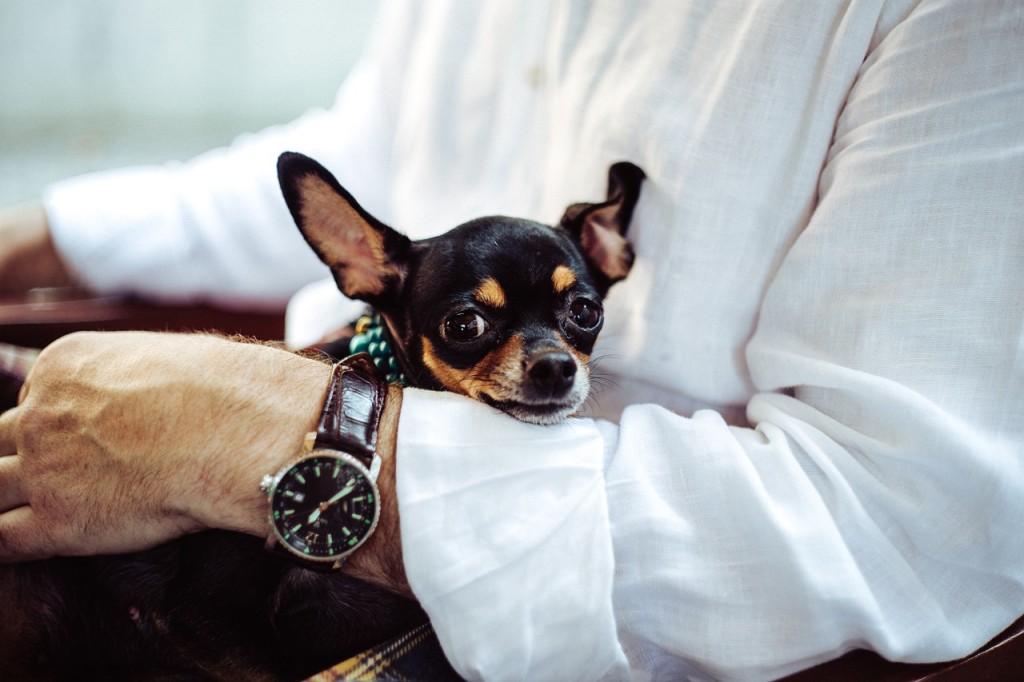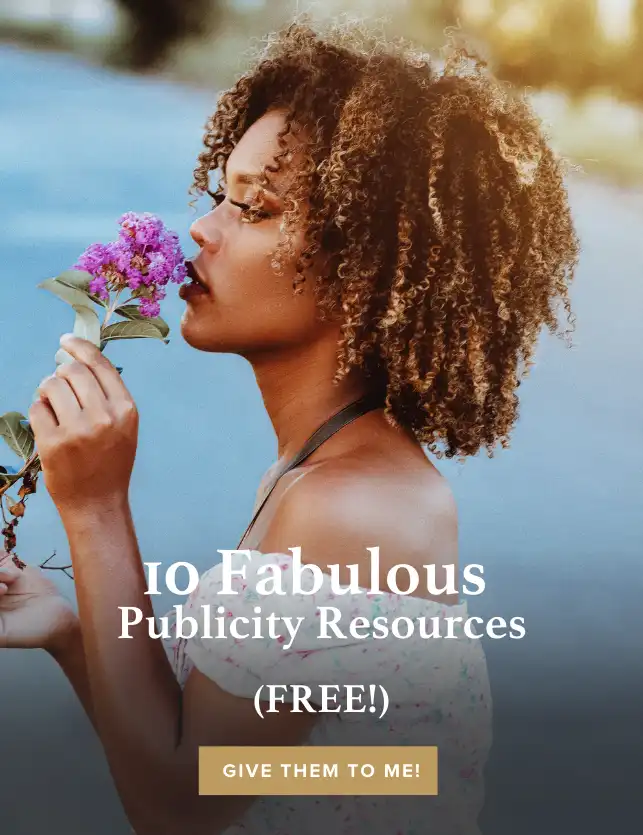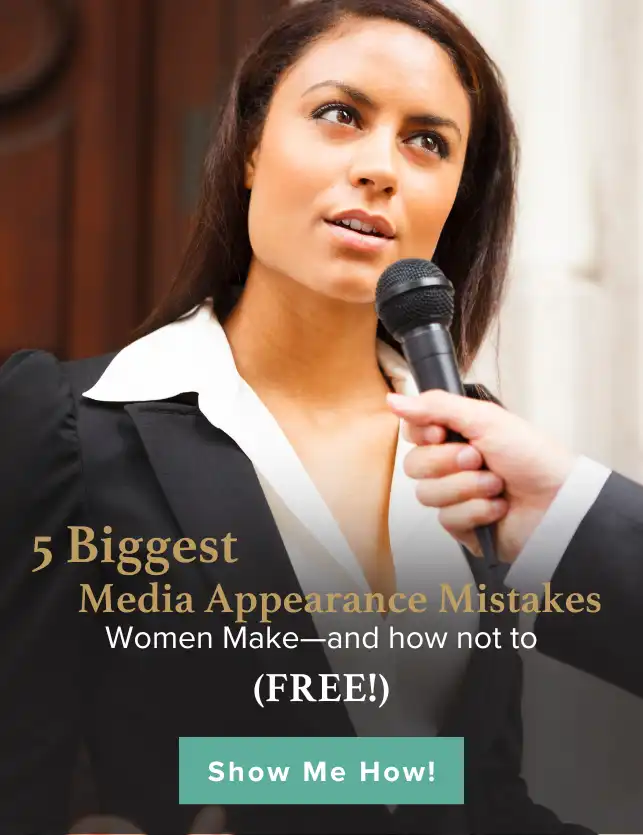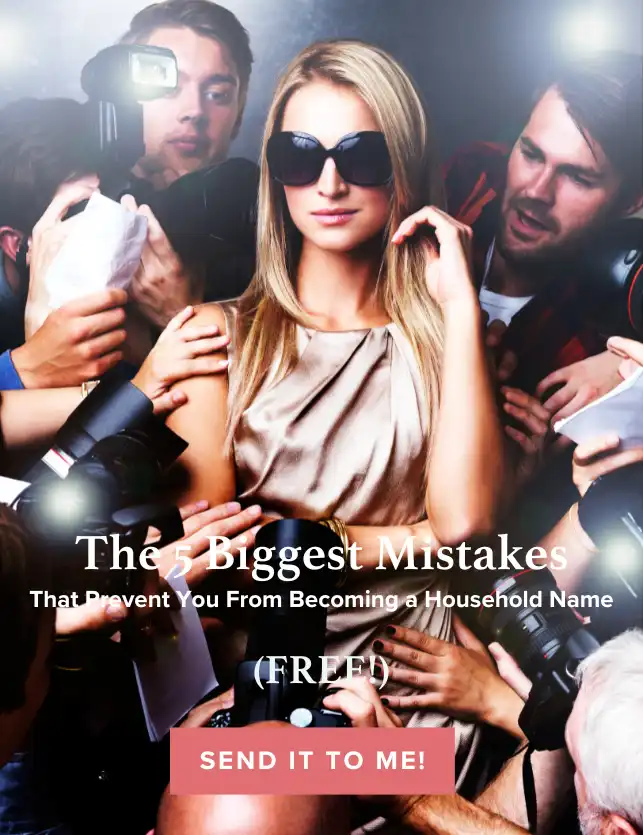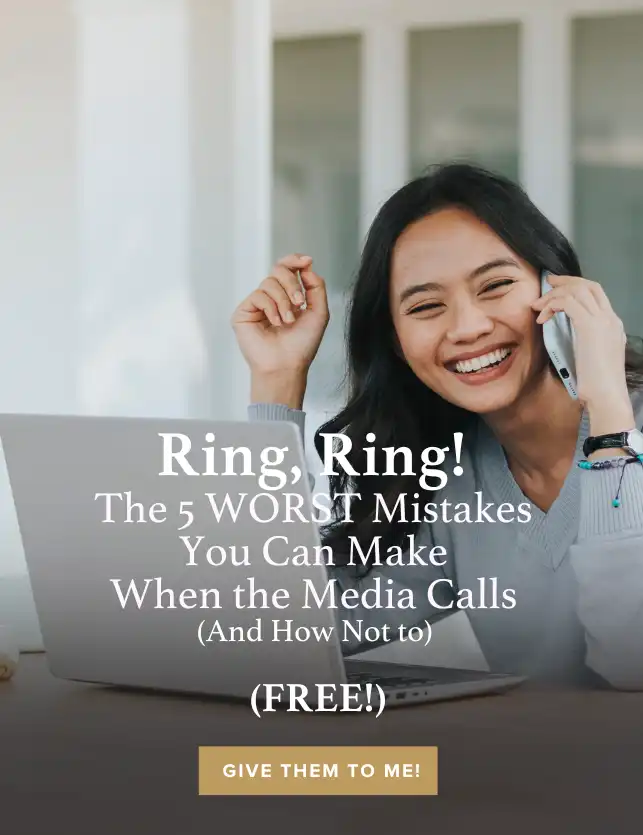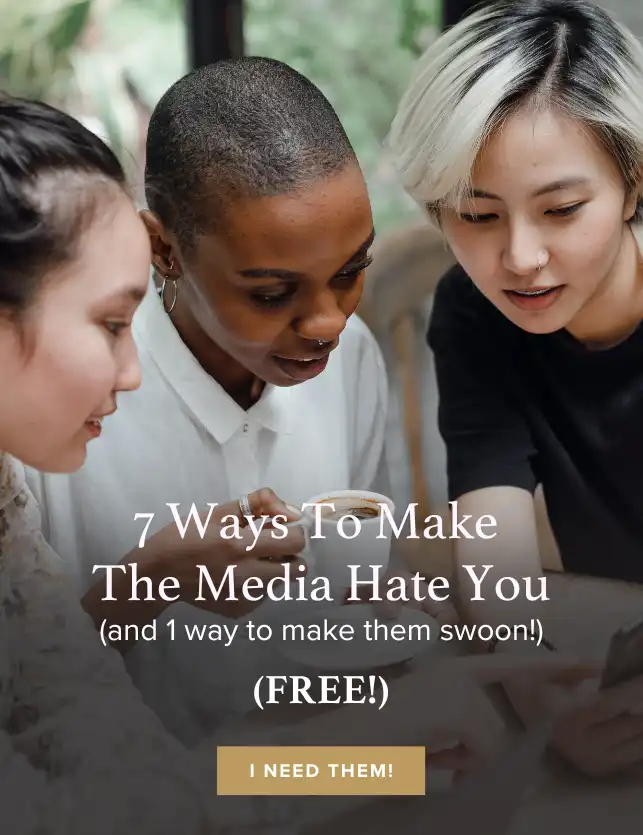The “Right” Way to Steal Other People’s Brilliant Business Ideas
Is it ever OK to “steal” someone else’s ideas – in business? Surprisingly: Yes.
Not long ago, a friend of mine found herself in the kind of situation that would make anyone’s stomach twist into knots.
My friend (an entrepreneur with a modestly popular website and blog) discovered that a woman in another country had stolen an e-course that she had created. Not just the title, or the general concept, or a few sentences here and there. The entire thing. Every lesson. Every piece. Word for word. The thief was passing the course off as her own, accepting payments for enrollment, and was claiming that all of the money was going to “charity.”
My friend was horrified. Eventually, she was able to shut down this shady operation, but it was a stressful and time-consuming process. Ultimately, she had to go directly to the customer service department of the e-commerce website that the thief was using and implore them to suspend the thief’s account, because she wasn’t responding to any of my friend’s emails.
This may seem like a “shocking” or “unusual” situation, but I’m sorry to say: it’s not.
Theft is rampant in the business world — especially in these techie times, where lifting someone else’s work (and passing it off as your own) can be as simple as clicking “copy” and “paste.”
This is the part of the blog post where you might expect me to stomp my foot down and say “Stealing is always wrong! Don’t do it, people!”
It might surprise you to know that…
I don’t necessarily believe that stealing is always “wrong.”
In fact — whether you’re studying photography, practicing Aikido at a dojo, or growing your business — “stealing” people’s ideas and “copying” other people’s masterful work is actually one of the best ways to learn, refine your skills, and ultimately, develop your own unique style.
Point being: there are many different types of “stealing.” Some types of stealing are illegal and immoral. Some are perfectly appropriate.
There is a big difference between “plagiarism” and “artful imitation,” but many business owners struggle to tell the difference.
Allow me to de-mystify things with a few Do’s and Don’ts.
When it comes to “stealing” and your business…here’s how to steal ideas the right way
1. DO steal ideas from other industries — not just your own.
If you’ve ever flown on an airplane, you know that most jets are dull, cramped, beige and gray clunkers. Not much “style” or attention to “ambience,” unless you’re fortunate enough to be flying First Class.
But the minds behind Virgin Airlines decided to break away from industry conventions. Inspired by chic hotels and groovy nightclubs, they decided to add soft pink “mood lighting” and mellow electronic music to their planes. When you board a Virgin jet, it feels like stepping into a sultry, celebrity-studded nightclub!
Even the Virgin website feels like a “departure” (pardon the pun!) from ordinary airline booking sites. As Luanne Calvert, Virgin’s head of Marketing, explains in this piece: “When creating the new site, we wanted to break out of the mold of typical airline booking sites, so we looked to popular e-commerce sites like Apple.com or Amazon.com, not other airline sites, for inspiration.”
Both of these Virgin anecdotes are perfect examples of how you can “steal” an idea from a business that’s outside of your industry and then “weave” that idea into your own branding, product development, or daily operations. This type of stealing is totally fine. It’s not “theft.” It’s re-mixing!
You try it: What’s something that inspires and excites you, outside of your industry? Do you love rock concerts? Spa trips? Ogling beautiful product packaging at your local boutique? How could you take an element of something you love and then “blend” it into your own business?
2. DO steal ideas from your mentors and teachers — and credit them as the source.
In the yoga world, it’s common to name and honor your teachers: explaining the “lineage” of your training, where you studied, who you studied under, who their teachers were, and so on.
Musicians, too, will often name their role models and publicly thank them in interviews, in CD liner notes, even onstage while delivering an acceptance speech for a glitzy award.
But in the business world, for whatever reason, people often seem hesitant to name their teachers and influencers outright, or explain where their ideas came from. That’s something we ought to change — and it’s quite simple to do.
If you’re writing a blog post that was directly inspired by someone you know, say so. (“This piece was inspired by a conversation with my mentor, so-and-so.” Then link to their website.)
If you’re creating a program that includes concepts, materials, even worksheets that you’ve sourced from other teachers, get permission first, then cite the source. (“This worksheet was adapted from a worksheet that was originally created by so-and-so, who graciously gave me permission to use some of her concepts here.”)
Another great move: build a “gratitude” page somewhere on your website (like this one) where you publicly acknowledge some of the teachers, mentors, coaches, and influencers who have shaped your approach to doing business.
Securing permission to use someone else’s material — and then crediting them — is always a smart move. It’s one that ensures you’ll never look like a lazy “thief” —but rather, a thoughtful student and a total class act!
You try it: Who are some of your top influencers and teachers? Do you thank them in writing, acknowledge them on your website, mention them during interviews, or otherwise make their presence (in your life) known? If not, how could you start doing that?
3. DO steal ideas from multiple sources — not just one.
The American playwright and entrepreneur Wilson Mizner once wrote, “If you steal from one author, it’s plagiarism; if you steal from many, it’s research.”
Let’s say, for the sake of example, that you are closely focused on one specific business owner — say, an elite life coach who’s doing phenomenal work, making tons of money, helping thousands of customers. You follow everything she does. You enroll in all her programs. She puts out a new product and you quickly follow suit, creating something similar. You imitate her business model, her voice, tone, style, everything she does. You just LOVE her!
Your intentions may be pure, but sooner or later, this kind of “hero-stealing” is going to get you into trouble. Why? Because you’re stealing from just one source.
Rather than developing your own unique business style, you’re copycatting just one person who seems to be doing it “right.” It’s time to broaden your field of inspiration!
You try it: Start filling your inspiration-tank from lots of diverse sources, not just one!
Go to an art gallery. Watch a silly movie. Listen to music that you don’t normally listen to. Read glossy magazines. Take a vacation. Have conversations with strangers. Read blogs and books written by people who work inside your industry, if you wish, but read LOTS of them — written by lots of different people, not just one author.
As you develop your own products, services, and online content, think: mixed-media collage, not Xerox photocopy.
And now, a few Don’ts.
These are pretty straightforward and will be obvious to most people, yet they’re worth repeating!
4. DON’T steal exact wording.
Grabbing someone else’s brilliantly written product description, blog post, e-course materials, and so on, and pretending that you’re the wordsmith who wrote it? NOT cool.
5. DON’T steal visuals that you find online (including “stock photos”) without permission.
Nope, crediting the artist with a link back to their website is not “enough.”
Seek permission to use images, illustrations, infographics and photos on your website, blog, and in your marketing materials. A quick email to the artist usually does the trick.
One exception: if the artist has explicitly stated that the image is “OK to use” — through a Creative Commons attribution license, for example, or by posting a note on their website that says “go for it!” — then feel free to use the image.
But if there’s no expressed permission, it’s not a wise move. (Getty Images has been cracking down lately, tracking bloggers and business owners who have used photos without permission and dinging them with hefty fines! It pays to be cautious.)
6. DON’T steal if your gut says, “This just doesn’t feel right.”
If you’re feeling hesitant or uncertain about whether something you intend to do is “OK” or not, listen to that gut instinct. Then take action to prevent heartache (or a lawsuit) later down the line.
Do your due diligence. Check the US trademark website to make sure that a business or product name you want to use isn’t already in use by a similar service provider. Reach out to your mentors and ask for their blessing to re-print their work or re-purpose their concepts and formulas. If you hire a graphic designer and you feel “funny” about a particular logo or infographic that they deliver to you (“Hmm… haven’t I seen this somewhere before?”) do some investigating. Remember: if the people you hire choose to steal inappropriately, it reflects poorly on your brand, too!
Last but not least:
When you’re creating content (of any kind) for your business…
7. DON’T forget to include true stories from your own life.
Nobody in the entire world has the exact same life experiences that YOU have.
Nobody in the entire world can tell the story about that one time you chatted with an elderly Vietnam vet while waiting in line at the DMV and learned a valuable lesson about grit and determination. (For example).
If you weave a “true story” into your next blog post, newsletter, webinar, a talk that you deliver onstage, e-course materials, and so on, then your materials will INSTANTLY become more “unique” and “identifiable” as belonging to YOU. (Remember how I started off this blog post with a true story from my own life about someone I know? Yup. Just like that.)
Even if you go on to discuss a “universal truth” or a “timeless reminder” or “no-brainer tips” that thousands of people have talked about before, adding a true story will elevate your material from “stale and forgettable” to “intimate and original.”
Maintain integrity in your writing and demonstrating respect for intellectual property.
Best Practices for Referencing Others
Give Proper Credit: Always acknowledge the original author when using their ideas or content. This not only shows respect but also enhances your credibility by demonstrating your commitment to ethical writing practices.
Use Direct Quotes Judiciously: When the original wording is particularly impactful or difficult to paraphrase without losing meaning, use direct quotes. Ensure you include proper citations according to the appropriate style guide.
Provide Context: When incorporating someone else’s ideas, offer sufficient context for your readers. Explain why the referenced information is relevant to your argument or narrative, helping your audience understand its significance.
Paraphrase Effectively: When rephrasing others’ ideas, ensure you fully comprehend the source material and convey the original meaning accurately in your own words. Even when paraphrasing, attribution is crucial to honor the original
author’s work.
Respect the Original Author’s Work: Show respect by not misrepresenting the author’s ideas. Maintain the intended meaning, tone, and context of the original work while discussing it in your content.
Strategies for Maintaining Credibility
To further enhance your credibility when referencing others, consider the following strategies:
Use reputable sources: Rely on well-established, peer-reviewed publications or recognized experts in the field to support your arguments.
Balance your sources: Incorporate a variety of perspectives to demonstrate a comprehensive understanding of the topic.
Stay current: Ensure that the sources you reference are up-to-date and relevant to your content.
Be transparent: Clearly distinguish between your own ideas and those of others to avoid any confusion or unintentional plagiarism.
To sum it up:
Stealing isn’t always “wrong.”
It’s a matter of how you do it, why you do it, and how you credit (or don’t credit) your sources and influencers.
The “right” way to steal other people’s brilliant business ideas
There’s “plagiarism” (ripping off one person, or one source, verbatim, word for word)… and then there’s “artful imitation” (getting inspired by multiple sources and then copying and re-mixing diverse ideas together… combined with true stories from your own life!).
Hopefully, now, you’re seeing and feeling the difference.
Your ideas may spring from other people’s teachings, and your insights might be “timeless” and “classic” rather than “revolutionary,” but as long as you’re stealing the “right” way, re-mixing rather than Xeroxing…
You’ll always be one-of-a-kind.
NOTE: This piece was inspired by a number of people and sources, including Austin Kleon (his book Steal Like An Artist is an excellent read for all business owners), the work of Julie Cottineau, former VP of Brand at Richard Branson’s Virgin Group and CEO of BrandTwist, and dozens of friends and clients (including several folks enrolled in my monthly publicity and business training club) who have reached out to me with plagiarism “horror stories” over the years. Thank you: everyone!
Check out our PR and Media Training Workshop to Jumpstart your Publicity

Like what you read? Share it!
Disclosure: Some of the above may be affiliate links that I will be compensated for at no cost to you. They are products or services I’ve either used, vetted or trust. Enjoy!
WE THOUGHT YOU’D ALSO LIKE THESE POSTS




